I hava creative sound card ,it's awe64 gold.
it's sounds very good!
this sound card have a dac chip from philps, it's tda1387
http://www.diyaudio.com/forums/attachment.php?attachmentid=435397&stc=1&d=1409195179
it's sames like to tda1543 and tda1545.
I want to mak it works as nos,so i design a new pcb
a few days later i recived this pcb
Attachments
-
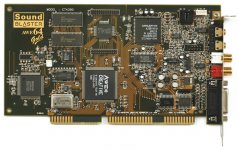 KL_Creative_Labs_Soundblaster_AWE64_Gold_CT4390.jpg187 KB · Views: 1,206
KL_Creative_Labs_Soundblaster_AWE64_Gold_CT4390.jpg187 KB · Views: 1,206 -
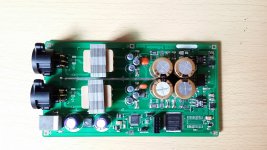 20140823_135329.jpg150.3 KB · Views: 1,173
20140823_135329.jpg150.3 KB · Views: 1,173 -
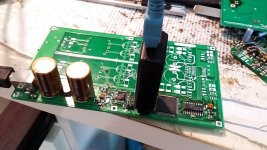 20140822_150728.jpg171.2 KB · Views: 1,151
20140822_150728.jpg171.2 KB · Views: 1,151 -
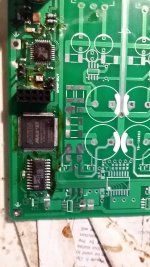 20140822_140335.jpg150.6 KB · Views: 97
20140822_140335.jpg150.6 KB · Views: 97 -
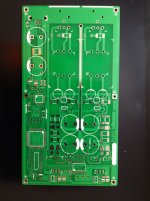 20140822_112757.jpg181.1 KB · Views: 1,164
20140822_112757.jpg181.1 KB · Views: 1,164 -
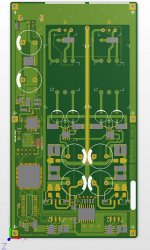 vicsta mk2.jpg166.3 KB · Views: 1,164
vicsta mk2.jpg166.3 KB · Views: 1,164 -
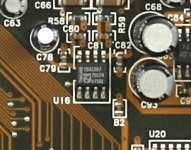 1387-1.jpg84 KB · Views: 1,212
1387-1.jpg84 KB · Views: 1,212 -
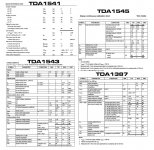 TTT.jpg192.7 KB · Views: 1,227
TTT.jpg192.7 KB · Views: 1,227
some pictures from osc(test point is tda1387 out pin)
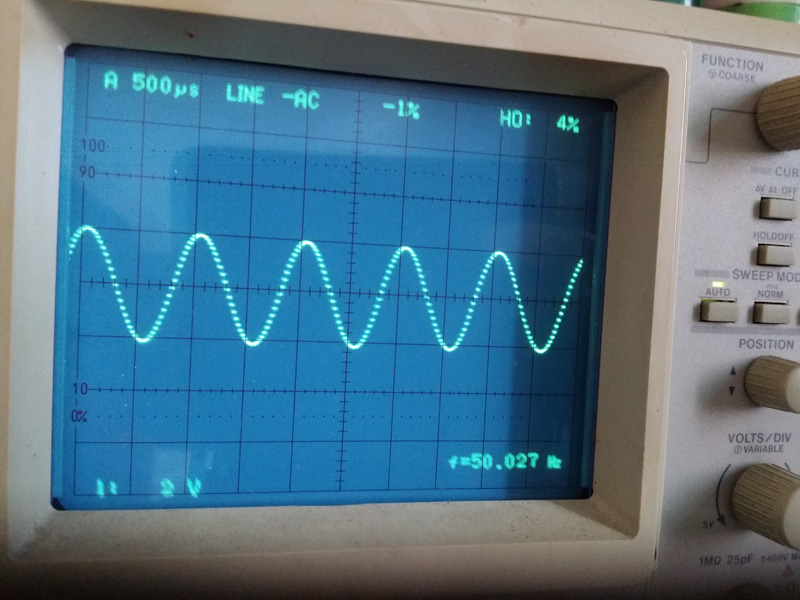
1k sin
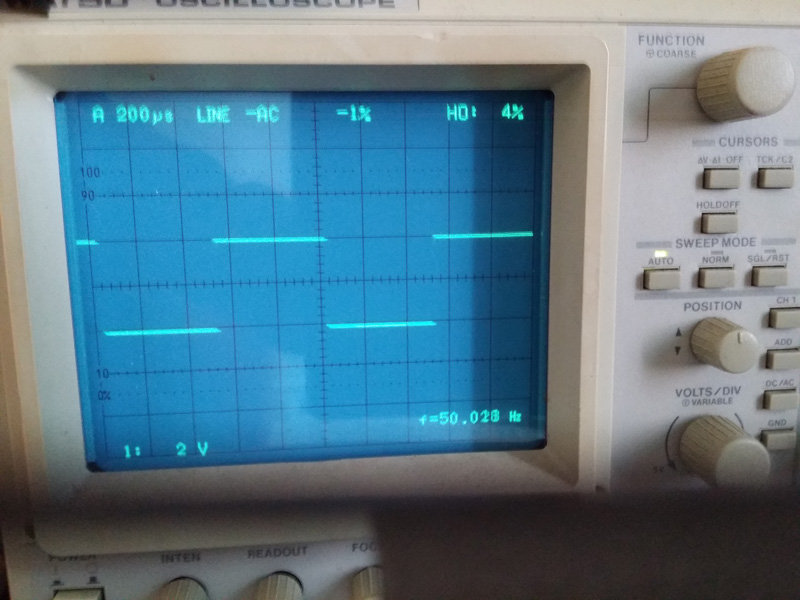
1k sq
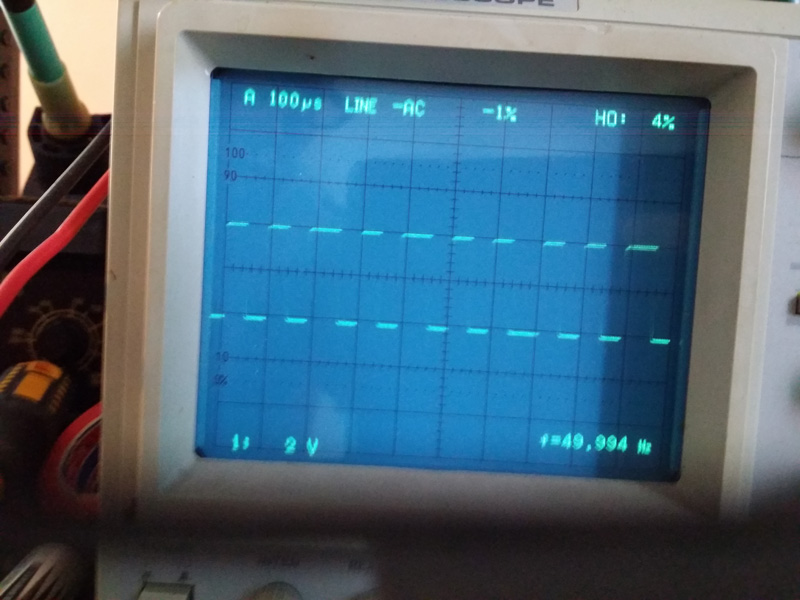
10k sq
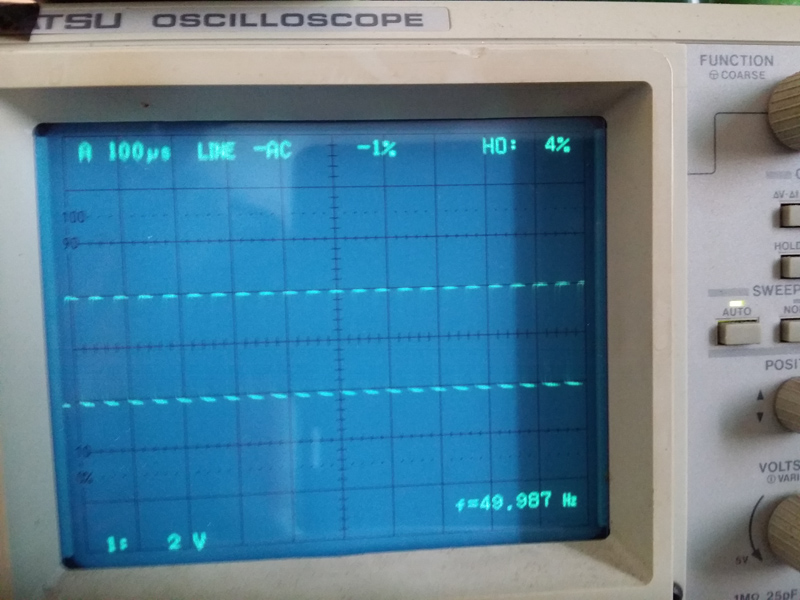
20.05k sin
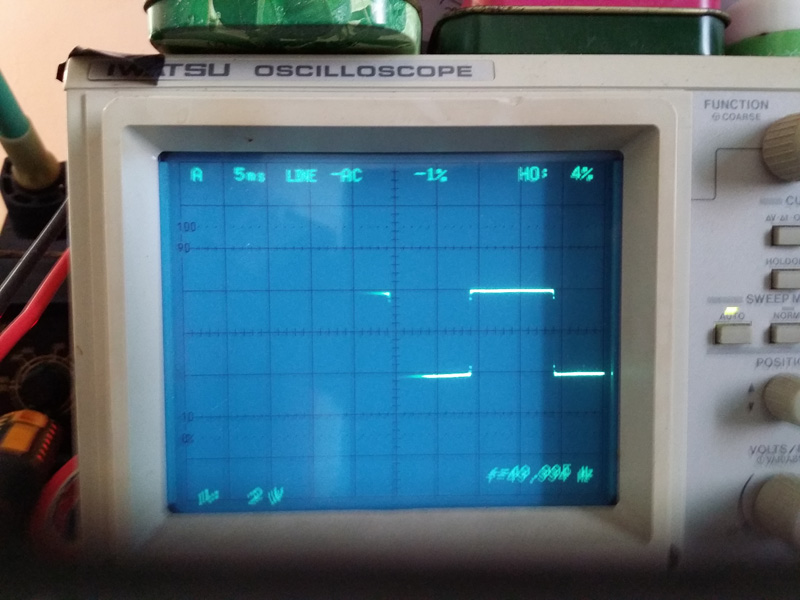
50hz sq
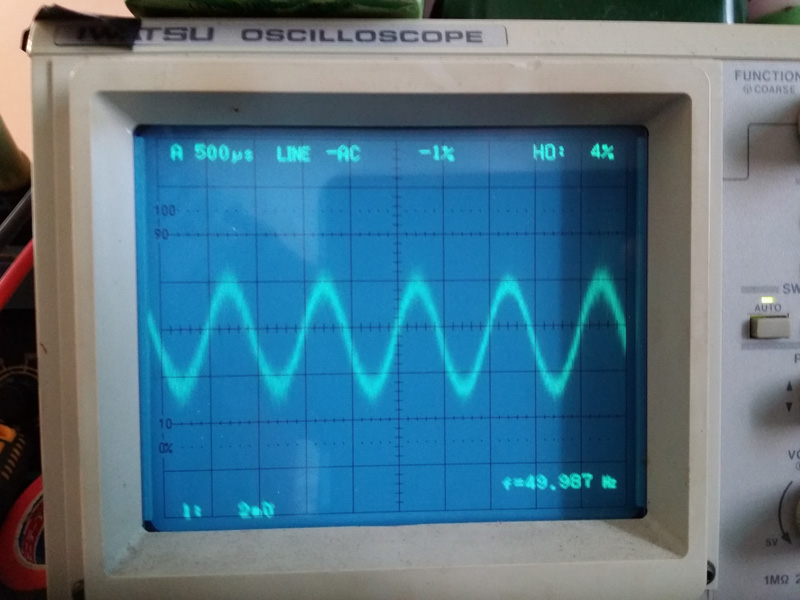
1k sin @ -60db
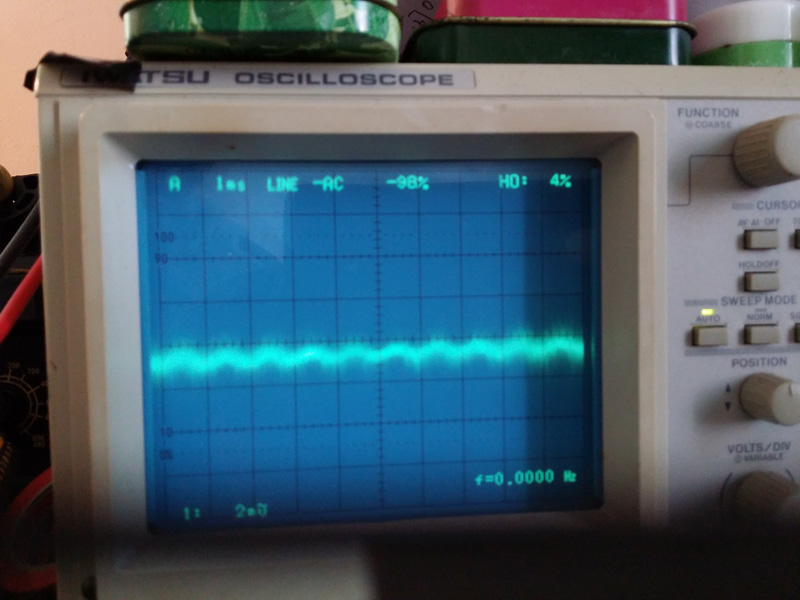
1k sin @ -90db
I/V resistor : vishiay 4k ohm
1k sin
1k sq
10k sq
20.05k sin
50hz sq
1k sin @ -60db
1k sin @ -90db
I/V resistor : vishiay 4k ohm
Attachments
-
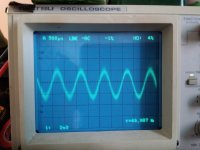 20140819_105115.jpg137.3 KB · Views: 1,090
20140819_105115.jpg137.3 KB · Views: 1,090 -
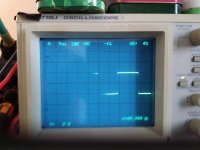 20140819_105338.jpg140.3 KB · Views: 1,071
20140819_105338.jpg140.3 KB · Views: 1,071 -
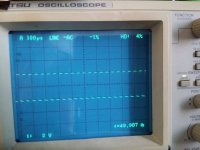 20140819_105312.jpg204.4 KB · Views: 1,080
20140819_105312.jpg204.4 KB · Views: 1,080 -
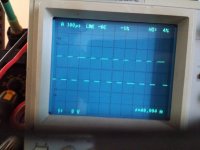 20140819_105252.jpg135.6 KB · Views: 1,087
20140819_105252.jpg135.6 KB · Views: 1,087 -
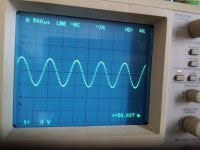 20140819_105151.jpg157.2 KB · Views: 1,101
20140819_105151.jpg157.2 KB · Views: 1,101 -
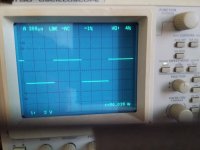 20140819_105221.jpg139.3 KB · Views: 1,090
20140819_105221.jpg139.3 KB · Views: 1,090 -
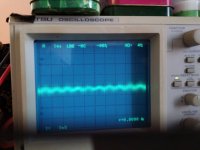 20140819_105041.jpg127.3 KB · Views: 1,061
20140819_105041.jpg127.3 KB · Views: 1,061
Interresting as nobody maid a pcb for the tda1387 before for DIY !
TDA1545 ; TDA1543 ; TDA1387 : are different beasts but all goods !
T. Loesch at AMR maid a good CD player & DAC (USB input in it) with the CD-777 and the dac chip TDA1387!
What do you plan here ? A complete DAC with an input... Why risk transformers at the output ? Few are good enough for this task : what are the ref used here ?
Do you want to sell a raw pcb ?
TDA1545 ; TDA1543 ; TDA1387 : are different beasts but all goods !
T. Loesch at AMR maid a good CD player & DAC (USB input in it) with the CD-777 and the dac chip TDA1387!
What do you plan here ? A complete DAC with an input... Why risk transformers at the output ? Few are good enough for this task : what are the ref used here ?
Do you want to sell a raw pcb ?
Looks like fun! You're using the Altera FPGA to sort out the I2S datastream into dual mono so each DAC runs as positive and negative phase for each channel?
I'm a bit concerned - not about the use of trafos (which I find are excellent) but rather the trafo being driven from a fairly high source impedance (the I/V resistor). In my designs I put a buffer there so the trafo sees a nice low driving impedance. But then again, I also have a filter before the buffer.
I'm a bit concerned - not about the use of trafos (which I find are excellent) but rather the trafo being driven from a fairly high source impedance (the I/V resistor). In my designs I put a buffer there so the trafo sees a nice low driving impedance. But then again, I also have a filter before the buffer.
I'm a bit concerned - not about the use of trafos (which I find are excellent). But then again, I also have a filter before the buffer.
I'm more with your pasive filtering as some others tried it with success with bulk speakers coils (surmise the bigger, the less losses ?!).... Output trafo is an other story.... a simple SEN/CEN have more luck to give a good result... Still interrested if you have a good passive filter for multibit dac chip but without the needs of matchings parts to fing the good values
But sure this is not what is important here ... but stay important
Last edited:
Still interrested if you have a good passive filter for multibit dac chip but without the needs of matchings parts to fing the good values
Funny you should ask that - I put one up on my blog only a couple of weeks ago. The filter's using Fastron inductors which can be obtained from Mouser - http://www.diyaudio.com/forums/blogs/abraxalito/1157-dac-filter-discrete-buffer.html
Thanks, I follow your blog... and stayed in my memory with the first version of the filter with the panasonic smt iirc.
The fastron does not needs matching : the 5% precision is enough with your new design ?
OT here, but do you think it can add a big plus with a TDA1541 or TDA1387 before a i/V à la SEN ?
The fastron does not needs matching : the 5% precision is enough with your new design ?
OT here, but do you think it can add a big plus with a TDA1541 or TDA1387 before a i/V à la SEN ?
Thank you for that.
Sorry Tendy if too much Off Topic. I find personnaly your choice very interresting, Advanced pro diyers like T. Loesch and Abrax report very good sounding result with this DAC chip !
Could be glad to see a good & not expensive pcb here... I have already many multibit DAC chip & pcbs : AD1862, TDA1541... but I assume when you like it, you have more than one ! (could be more accurate to spend money in once time for a very good dac... but the hobby & Learning curve will not be the same...like the smile of the banker)
Sorry Tendy if too much Off Topic. I find personnaly your choice very interresting, Advanced pro diyers like T. Loesch and Abrax report very good sounding result with this DAC chip !
Could be glad to see a good & not expensive pcb here... I have already many multibit DAC chip & pcbs : AD1862, TDA1541... but I assume when you like it, you have more than one ! (could be more accurate to spend money in once time for a very good dac... but the hobby & Learning curve will not be the same...like the smile of the banker)
Yes indeed, +1 for the choice of the TDA1387, a real unsung hero of the DAC world. The chip is very amenable to being stacked (in the same style as TDA1543) except without the thermal concerns. This could be a viable solution to driving a transformer - parallel more chips.
Perhaps its being fed some artificial digitally synthesized waveform.
If I understand correctly, when you use digitally generated synth waves, it could be possible.. But when I use to produce square wave with a synthesizer software (without involving any ADC) I got -expected- pulsed response every time. For example es9023 dac @ 192k.
The 1387 is (AFAIK) an I2S version of the TDA1545A (please refresh me on any subtle diffs.)....
...anyway (and as I've noted prev. here on DIYA about the TDA1545A) .... since they are (1) of "classic" multi-bit design, that many DIYers prefer; (2) use very low power; and (3) are avail. in small SOIC pkg ....
...why Philips or (now) an Asian "cloner" does not continue to manuf. them?
I can easily see one of these incorporated into a portable DAP or USB DragonFly-like device, etc...
...am pretty sure they would give ESS or the latest TI, Wolfson or AD some important competition.
...anyway (and as I've noted prev. here on DIYA about the TDA1545A) .... since they are (1) of "classic" multi-bit design, that many DIYers prefer; (2) use very low power; and (3) are avail. in small SOIC pkg ....
...why Philips or (now) an Asian "cloner" does not continue to manuf. them?
I can easily see one of these incorporated into a portable DAP or USB DragonFly-like device, etc...
...am pretty sure they would give ESS or the latest TI, Wolfson or AD some important competition.
The subtle differences beyond the digital interface change are in three areas. The 1387 is about twice as power-hungry. It has an output voltage compliance range down to 0V (1545A only down to 2V) and it has an internal resistor feeding pin7 so only needs a capacitor there.
<edit> On your other question about manufacturing, I rather suspect there's no demand for them beyond DIYers. Nowadays DACs that sell are higher than 16bit performance, designers look for better numbers in SNR and THD. Also designers look for more integration - a 'one stop' chip. These TDAs more than blow away the other brands you've mentioned in terms of SQ when attention is paid to a whole host of implementation details, but again there's no mass-market for SQ, most customers just want the numbers. As far as I'm aware there's only one portable DAP using a TDA - the TeraPlayer and that has a cult following despite the high-end price.
<edit> On your other question about manufacturing, I rather suspect there's no demand for them beyond DIYers. Nowadays DACs that sell are higher than 16bit performance, designers look for better numbers in SNR and THD. Also designers look for more integration - a 'one stop' chip. These TDAs more than blow away the other brands you've mentioned in terms of SQ when attention is paid to a whole host of implementation details, but again there's no mass-market for SQ, most customers just want the numbers. As far as I'm aware there's only one portable DAP using a TDA - the TeraPlayer and that has a cult following despite the high-end price.
Last edited:
Hi abraxalito,
My main concern is SQ as well. Which I/V stage would you recommend for this dac? I'm asking because I couldn't find any complete schematic which designed in strict SQ curiosity and value of components specifically calculated for this dac. Sorry but I'm not so into electronics thus can't calculate values according to datasheet specs for myself.
Edit: I confess that my English is bad as well as my electronics.
My main concern is SQ as well. Which I/V stage would you recommend for this dac? I'm asking because I couldn't find any complete schematic which designed in strict SQ curiosity and value of components specifically calculated for this dac. Sorry but I'm not so into electronics thus can't calculate values according to datasheet specs for myself.
Edit: I confess that my English is bad as well as my electronics.
Last edited:
Wanted: classic multi-bit DACs!!

Also, classic multi-bit "new-old-stock" DACs are not that uncommon in "high-end" manufactured gear ...
... budget iFi portable gear from UK's parent Abbingdon Music Research (AMR) has a current "high-end" CD player that uses TDA1541A:
CD-77
The company claims: "The core DAC is the classic "King of the Multibit" – Philips TDA1541A chipset. This chipset forms the heart of an extremely unique “Digital Engine” that is comprised of the latest Lattic’s CPLD and TI’s DSP devices. Through the proprietary Digital Master I/Digital Master II settings, the CD-77 is one of the select few digital components that is able to play "bit perfect" audio. This means music, not hifi is the result as the sound is just right because there is no artificial manipulation of the signal (so often found in almost all other machines). " Strangely, for their next model CD player or D/A processor, CD-777 or DP-777, they claim to use some weird "Philips UDA1305AT Multibit chipset"
And then there is the ultra-expensive Zanden DAC that also uses TDA1541A.
...and even some "budget" stuff like the HiFiMan HM-602 (uses TDA-1543)
...And then there is all the attention to classic multi-bit in DIYA.
Understandably, the major chip manufs. want low-cost, small footprint, low power consumption and easy implementation ... and isn't that what devices like TDA1545/TDA1387 offer? Yeah, you need I/V opamp (and a couple of passives, i.e., C's and R's) ... but that's easy stuff.
Yeah ... 16/44.1 no longer looks/"sounds" all that impressive in our markety audio world: "HD" ... "high-rez" ... now DSD ... iDSD ... Octa-Speed 512/PCM 768/2xDXD ... Pono ... pffffttt!
History repeats itself endlessly, it seems: E.g., reminiscent of the wattage craze of the late 1970s ... so, maybe the gubment (U.S. FTC) needs to step in again?
Oh ... I'm not ignoring the comment about newer chips with better metrics (specs) than the older multi-bits. I have two "answers" to that:
(1) That list of specs has been growing since audio began ... meaning as human science improves, more parameters are added. E.g., I don't recall early datasheets with jitter and linearity specs. So who knows what as-yet uncovered facts of Nature lurks that correlates to multi-bit sonic signature.
Another example of this is tube vs SS.
(2) We can also say that quantity of certain reported specs, important and fundamental as they may be, don't necessarily correlate to important sonic bennies ... e.g., THD of 1% vs. 0.05.
And you can compare oranges to oranges for this: one SS design vs. another SS design. Ditto argument (and coming back to) DAC architecture.
Meguesses the major manuf's must be at least glancing at DIY forums --- if you're reading this AD/TI/ESS/AKM/Wolfson ... you know what to do nextTOn your other question about manufacturing, I rather suspect there's no demand for them beyond DIYers. Nowadays DACs that sell are higher than 16bit performance, designers look for better numbers in SNR and THD. Also designers look for more integration - a 'one stop' chip. These TDAs more than blow away the other brands you've mentioned in terms of SQ when attention is paid to a whole host of implementation details, but again there's no mass-market for SQ, most customers just want the numbers. As far as I'm aware there's only one portable DAP using a TDA - the TeraPlayer and that has a cult following despite the high-end price.
Also, classic multi-bit "new-old-stock" DACs are not that uncommon in "high-end" manufactured gear ...
... budget iFi portable gear from UK's parent Abbingdon Music Research (AMR) has a current "high-end" CD player that uses TDA1541A:
CD-77
The company claims: "The core DAC is the classic "King of the Multibit" – Philips TDA1541A chipset. This chipset forms the heart of an extremely unique “Digital Engine” that is comprised of the latest Lattic’s CPLD and TI’s DSP devices. Through the proprietary Digital Master I/Digital Master II settings, the CD-77 is one of the select few digital components that is able to play "bit perfect" audio. This means music, not hifi is the result as the sound is just right because there is no artificial manipulation of the signal (so often found in almost all other machines). " Strangely, for their next model CD player or D/A processor, CD-777 or DP-777, they claim to use some weird "Philips UDA1305AT Multibit chipset"
And then there is the ultra-expensive Zanden DAC that also uses TDA1541A.
...and even some "budget" stuff like the HiFiMan HM-602 (uses TDA-1543)
...And then there is all the attention to classic multi-bit in DIYA.
Understandably, the major chip manufs. want low-cost, small footprint, low power consumption and easy implementation ... and isn't that what devices like TDA1545/TDA1387 offer? Yeah, you need I/V opamp (and a couple of passives, i.e., C's and R's) ... but that's easy stuff.
Yeah ... 16/44.1 no longer looks/"sounds" all that impressive in our markety audio world: "HD" ... "high-rez" ... now DSD ... iDSD ... Octa-Speed 512/PCM 768/2xDXD ... Pono ... pffffttt!
History repeats itself endlessly, it seems: E.g., reminiscent of the wattage craze of the late 1970s ... so, maybe the gubment (U.S. FTC) needs to step in again?
Oh ... I'm not ignoring the comment about newer chips with better metrics (specs) than the older multi-bits. I have two "answers" to that:
(1) That list of specs has been growing since audio began ... meaning as human science improves, more parameters are added. E.g., I don't recall early datasheets with jitter and linearity specs. So who knows what as-yet uncovered facts of Nature lurks that correlates to multi-bit sonic signature.
Another example of this is tube vs SS.
(2) We can also say that quantity of certain reported specs, important and fundamental as they may be, don't necessarily correlate to important sonic bennies ... e.g., THD of 1% vs. 0.05.
And you can compare oranges to oranges for this: one SS design vs. another SS design. Ditto argument (and coming back to) DAC architecture.
Go with datasheet
Go with what's in the TDA datasheet if you're economizing.
If you've got the $$, the latest Monica with Rudolf B's I/V -- avail. at diyparadise -- is best I've tried ... my 2008 version is hardly the latest but it is decent.
Depends on your budget.My main concern is SQ as well. Which I/V stage would you recommend for this dac? I'm asking because I couldn't find any complete schematic which designed in strict SQ curiosity and value of components specifically calculated for this dac. Sorry but I'm not so into electronics thus can't calculate values according to datasheet specs for myself.
Go with what's in the TDA datasheet if you're economizing.
If you've got the $$, the latest Monica with Rudolf B's I/V -- avail. at diyparadise -- is best I've tried ... my 2008 version is hardly the latest but it is decent.
Polishing a turd?
Forgot to note ...

They'll say, "you DIYer's overkill PSUs and regulation, when it comes to these TDA fossils, is polishing a turd" ... and DIYer's will make an equally pejorative comment about the latest Delta-Sigma...so...
What's the minimum PCB footprint and equally economical regulation and output section needed to make a decent sounding portable USB DAC (like iDAC or DragonFly)?
E.g., USB decoder >> XMOS DSP/FPGA (optional) >> I2S-to-EIAJ (this is a toughie) >> TDA1545A (SOIC size) >> I/V (output)
And then, wrapped around the above, a clean 5V regulation section. I think there are now decent OPAs (that can work at 5V ... correct me if I'm wrong).
As far as the DSP/FPGA ... not sure that can convert I2S to EIAJ ... but it's nice compact size is way preferable to several space-hogging 74HC logic chips "glued" together!
Forgot to note ...
...well, that's too vague to 'fluence the maj. manuf's we're (I'm, anyway) trying to get on boardThese TDAs more than blow away the other brands you've mentioned in terms of SQ when attention is paid to a whole host of implementation details, ...
They'll say, "you DIYer's overkill PSUs and regulation, when it comes to these TDA fossils, is polishing a turd" ... and DIYer's will make an equally pejorative comment about the latest Delta-Sigma...so...
What's the minimum PCB footprint and equally economical regulation and output section needed to make a decent sounding portable USB DAC (like iDAC or DragonFly)?
E.g., USB decoder >> XMOS DSP/FPGA (optional) >> I2S-to-EIAJ (this is a toughie) >> TDA1545A (SOIC size) >> I/V (output)
And then, wrapped around the above, a clean 5V regulation section. I think there are now decent OPAs (that can work at 5V ... correct me if I'm wrong).
As far as the DSP/FPGA ... not sure that can convert I2S to EIAJ ... but it's nice compact size is way preferable to several space-hogging 74HC logic chips "glued" together!
Last edited:
- Status
- This old topic is closed. If you want to reopen this topic, contact a moderator using the "Report Post" button.
- Home
- Source & Line
- Digital Source
- build a nos dac with tda1387